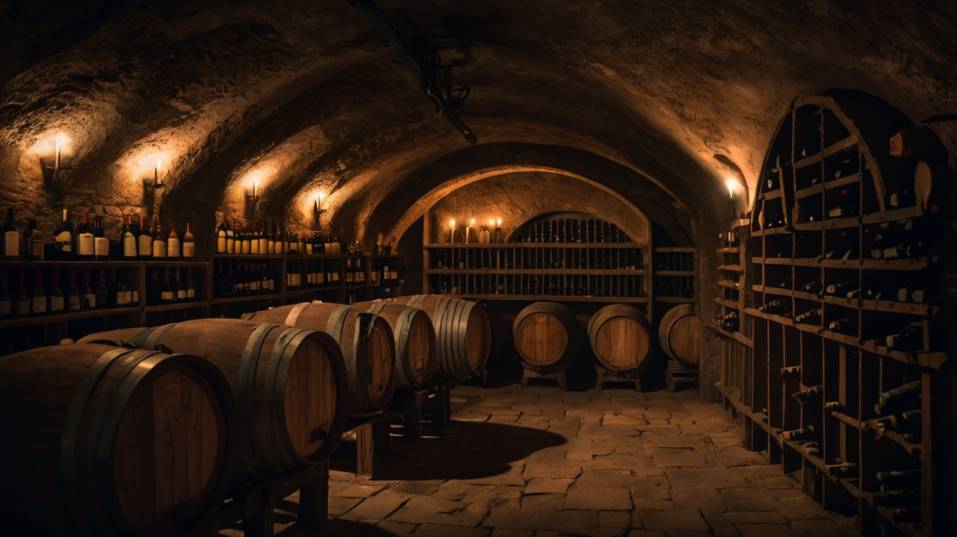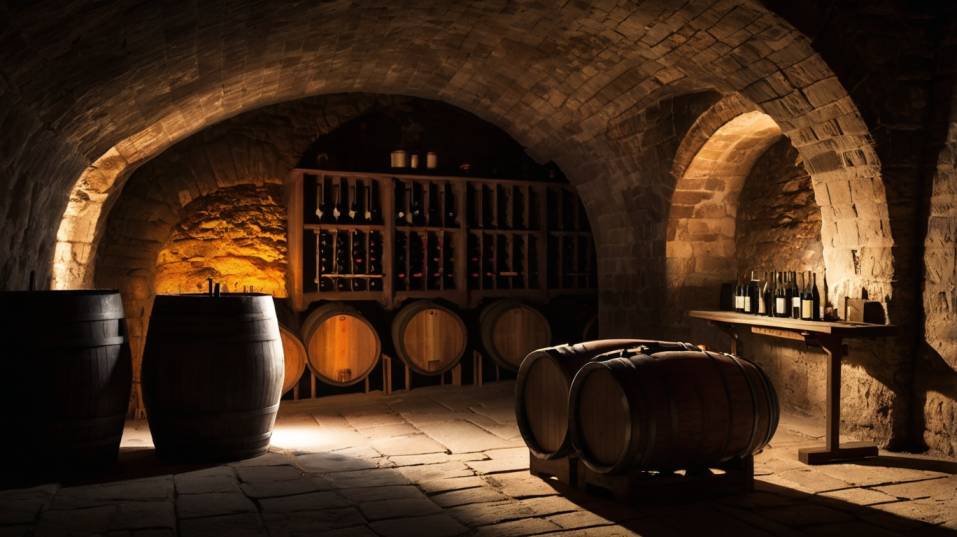Wine and War: Strange Stories from History
Wine has survived war, smuggling, and sabotage. Explore how conflict shaped history’s boldest bottles—and how to drink them with insight.

What if every sip of wine told a war story? For centuries, wine has been looted, hidden, faked, and even fought over. Long before it reached your glass, it survived empires, occupations, and underground resistance.
If you're starting to take wine seriously, this is your invitation to dig deeper. Wine isn’t just flavor—it’s legacy, defiance, and memory, bottled. Once you understand that, you’ll never drink the same way again.
Power in the Bottle
Wine has been a symbol of status for thousands of years, but in times of war, it became more than luxury. It became leverage.
The ancient Greeks traded it for allies. The Romans turned it into a tool of cultural domination. When they conquered Gaul—modern-day France—they didn’t just impose taxes and soldiers; they planted vines.
Roman soldiers and settlers brought with them a preference for strong, structured reds, and over generations, those tastes shaped what we now know as Bordeaux and the Rhône.
By the Middle Ages, wine was Europe’s most precious liquid commodity. Kings gifted barrels instead of gold. Monasteries guarded vineyards with almost fanatical devotion, and in doing so, became the first true terroir specialists.
They knew which slopes caught the best sun and which soils drained just enough rain. They didn’t have the language we do now—no “mineral finish” or “mid-palate complexity”—but they knew the land shaped the wine.
So when invaders came, they protected the vines first. You don’t need to memorize a single dynasty or timeline to benefit from this. Just remember this: the greatest wines weren’t made by accident.
They’re the result of people fighting—literally—for the right to taste something lasting. That changes how you drink. You start to focus on texture, structure, and tension—qualities shaped by adversity, not ease.

Champagne Under Fire
Few wine regions have a war record as intense as Champagne. During World War I, the city of Reims was shelled almost daily for four years. Homes collapsed. Streets vanished. And still, Champagne production never fully stopped.
How? People moved underground. The region’s famous chalk cellars—some carved as far back as Roman times—became bomb shelters, schools, bakeries, and wineries all at once.
Families lived among the riddling racks. Children were born beneath streets that no longer existed. And above ground, the vines kept growing.
Even after the war, those same cellars were used again during World War II. The Champenois had learned how to hide, how to wait, how to protect their craft in silence.
When you drink Champagne, that pressure in the bottle isn’t just carbon dioxide. It’s the pressure of survival. The best examples show elegance under strain—tight acidity, fine mousse, restrained fruit.
Next time you open a bottle, pour it into a glass with enough room to swirl. Let the bubbles settle. You’ll start to taste the edges, the minerality, the precision—and maybe even a little defiance.
That’s what sets great Champagne apart from ordinary sparkling wine. It’s not the price. It’s the poise.
Burgundy in Disguise
During the Nazi occupation of France in World War II, wine cellars became battlegrounds of a different kind.
Officers of the Third Reich, many of them with trained palates and lavish tastes, sought out the finest Burgundies with almost obsessive intensity. But Burgundy’s winemakers weren’t passive.
Take the story of Maurice Drouhin, a key figure at Maison Joseph Drouhin. He cooperated with the Resistance and, when danger drew near, fled through a secret tunnel connecting his offices to the Hospices de Beaune.
Meanwhile, his colleagues sealed off the finest vintages behind false walls and camouflaged entrances. Other domaines relabeled their bottles, marked them with fake vintages, or hid them beneath barrels of vinegar.
What does that teach you as a drinker? That labels can lie. Bottles can mislead. Vintage charts and flashy branding aren’t a guarantee of quality—or honesty.
What you can trust is your own attention. Burgundy is a region that rewards focus. Pinot Noir from the Côte de Nuits isn’t about power or fruit bombs.
It’s about detail: scent, transparency, and the way flavor moves through space in your mouth. The more you slow down, the more you’ll see how even the most delicate wine can carry a fierce core.
And that matters—especially if you’re learning to buy smarter. Don’t chase price tags. Chase stories. Chase soil.
California's Postwar Boom
Wine’s wartime tales don’t end in Europe. After World War II, the U.S. wine industry, long crippled by Prohibition, finally began to reawaken.
Returning soldiers, many of whom had tasted European wines during their deployment, brought back both a curiosity and a demand for something better than jug wine.
Veterans became winemakers, entrepreneurs, and investors. And in California, particularly Napa and Sonoma, they planted not just vines—but ideals. Structure. Precision. Ambition.
This postwar period laid the groundwork for what would become the California wine identity: bold, expressive, sun-kissed, but never sloppy.
The best examples—Cabernet Sauvignon from hillside vineyards or Chardonnay grown in cooler coastal pockets—combine fruit generosity with disciplined winemaking.
That balance didn’t just happen. It was earned. So when you pick up a Napa Cab, don’t just look for alcohol percentage or tasting notes. Ask where it’s from. Was it mountain fruit? Was it dry-farmed? Who made it, and why?
That context transforms a big red into something more than a drink—it becomes a cultural echo, a continuation of a story that started with a generation rebuilding a country.
Modern Conflicts, Ancient Practices
Even now, wine is still made in conflict zones. In Lebanon’s Bekaa Valley, the legendary Château Musar has produced wine through decades of civil war and bombardment.
In Georgia, winemakers continue to use qvevri—giant clay vessels buried underground—despite Russian incursions and political upheaval. These aren't vanity projects. They're acts of cultural preservation.
When you drink wines from places like these, you’re not just experiencing “something different.”
You’re honoring a tradition that’s outlasted everything from empires to embargoes. And here’s the real-world takeaway: don’t be afraid to explore off the beaten path.
Wines from Eastern Europe, the Caucasus, the Middle East—they might not have familiar grapes or flashy labels, but they have stories. And the more of them you taste, the more confident and curious your palate becomes.
Final Thoughts: Taste What Endures
Wine has always lived at the edge of comfort. It’s been cellared in crises, shipped across battlefields, hidden beneath ruins. The world has tried again and again to stop it, and still it survives—aging quietly, getting better with time.
That’s a lesson for your palate. Don’t rush. Don’t chase trends. Taste the wines that last. Tonight, pick something with a little more story behind it. Maybe a grower Champagne made by a family that lived through shelling.
Maybe a humble Pinot from a slope planted by monks 800 years ago. Maybe a bottle from a region you can’t yet pronounce. Swirl it. Smell it. Let it speak.
Because when you learn to listen to wine, you’re not just learning to taste better. You’re learning to drink with purpose—and that’s where the real confidence begins.




